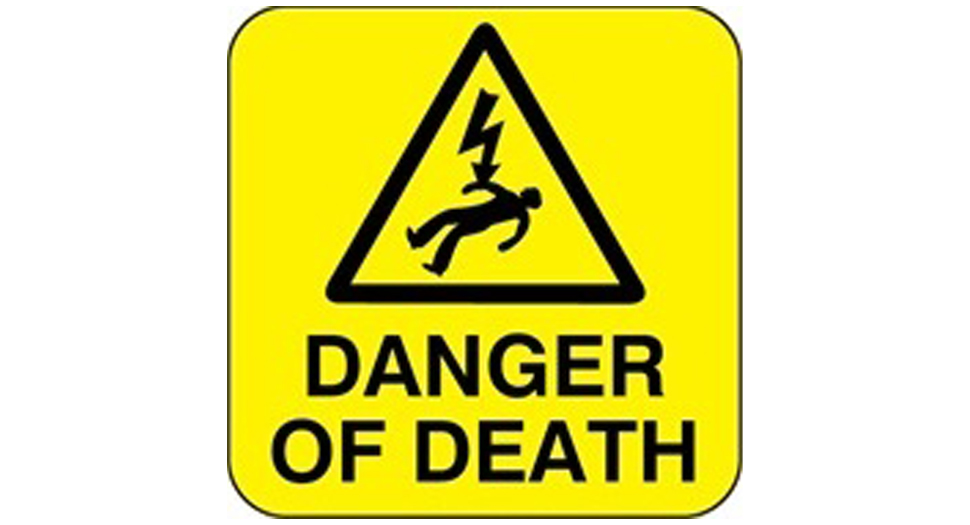EN62368-1 to Become Mandatory for Industrial, IT and AV Equipment
On December 20th 2020, there is a planned change in the process of gaining the CE mark. Until that date, if units under test pass EN 60950-1 they are presumed to conform to the Low Voltage Directive (LVD) 2014/35/EU which ensures that electrical equipment within certain voltage limits provides a high level of protection for European citizens.This presumption will be withdrawn at the end of next year, to be replaced by EN 62368-1, so designers of equipment requiring the CE mark need to specify power supplies that meet the new standard.

IEC 62368-1, Ed 1.0 was written in 2010 by the IEC TC108, the technical committee that advises CENELEC, the European Committee for Electro-technical Standardisation, on the subject of standardisation of safety for AV, information and communications equipment. Edition 2 was published in February 2014. The IEC (international) and EN (European) versions of the new standard are identical. Currently it is a voluntary alternative to the IEC 60065-1 and IEC 60950-1 standards. In December 2020 it will become mandatory. The new standard was mostly driven by manufacturers of devices such as smartphones which combine computing, AV and communications functionality, previously covered by IEC 60065-1 and IEC 60950-1; however the new standard, IEC 62368-1, is not simply a merger of IEC 60065-1 and IEC 60950-1.
IEC 62368-1 covers equipment such as PCs, amplifiers, digital cameras, TVs, mobile telephones, power supplies, network infrastructure equipment, battery-powered devices, photo-copiers and musical instruments. For the standard to encompass all these different products it must be technologically-independent and more hazard-based – or, in other words, it must be based on engineering best practice rather than product specifics. This results in a more performance-based approach, with products achieving qualification based on test results as opposed to construction regulations.
Each hazard clause is laid out individually stating: the objective of the clause; the energy source and the supplemental and reinforced safety measures; location of the safeguard - including its properties and parameters; and finally the safeguard tests to verify hazard mitigation.
Injury only occurs when the hazard (predominantly electrical sources of energy, but can be others such as heat, fuel, mechanical, radiation) has a mechanism that permits the transfer of significant energy for a significant time to the body. The energy sources are split into three classes, as detailed in Table 1
| Energy Source | Effect on the body | Effect on combustible materials |
| Class 1 | Not painful, but detectable | Ignition unlikely |
| Class 2 | Painful but no permanent injury | Ignition possible, limited spreading of combustion |
| Class 3 | Injury | Ignition likely, rapid spread of fire |
Table 1 - Classes of Energy Source
A Class 1 energy source has levels not exceeding Class 1 limits under:
- normal operating conditions;
- abnormal operating conditions that do not lead to a single fault condition;
- single fault conditions that do not result in Class 2 limits being exceeded. Under normal operating conditions and abnormal operating conditions, the energy in a Class 1 source, in contact with a body part, may be detectable, but is not painful nor is it likely to cause an injury.
A Class 2 energy source has levels exceeding Class 1 limits and not exceeding Class 2 limits under:
- normal operating conditions,
- abnormal operating conditions,
- or single fault conditions.
The energy in a Class 2 source, under contact with a body part, may be painful, but is not likely to cause an injury. For fire, the energy in a Class 2 source can cause ignition under some conditions.
A Class 3 energy source has levels exceeding Class 2 limits under:
- normal operating conditions,
- abnormal operating conditions,
- or single fault conditions, or any energy source declared to be a Class 3 source.
The energy in a Class 3 source, under contact with a body part, can cause injury. For fire, the energy in a Class 3 source may cause ignition and the spread of flame where fuel is available.
Safeguards are classified in three levels:
1) Basic safeguards – effective under normal and abnormal working conditions.
2) Supplementary safeguards – effective in the event of a single fault of any part, including the basic safety guards
3) Reinforced safeguards - effective under normal and abnormal operating conditions and single fault conditions.
Each of these are graded as follows:
- Equipment safeguards - inherent in the product and not reliant on the user to implement or influence the effectiveness of those safeguards.
- Installation safeguards - the installer must be competent in installation (safeguarding is achieved through correct installation).
- Behavioural safeguards - the energy source is accessible to the user
Table 2 explains the safeguarding in greater detail.
Table 2 - Safeguarding
How does EN 62368-1 compare with EN 60950-1? Most of the changes are descriptive, for example: SELV (safety extra low voltage) and LCC (Limited Current Circuit) are covered by Energy Source Class I. TNV Telephone Network Voltage is described as an external circuit. The Service Person becomes Skilled Person and User (operator) / User with Limited Training becomes Ordinary Person or Instructed Person respectively.
The planned change to the new standard comes into effect on December 20th 2020. To ease the transition to the new standard, clause 4.1.1. has been added to the current revision 2 of the standard: “Application requirements and acceptance of materials, components and subassemblies”. This essentially permits the continued use of IEC 60950-1 components as part of the system, including chassis mount and board mount power converters. The current revision states that this will be removed in revision 3, however the latest news from the IEC TC108 interpretation panel is that they plan to keep the clause infor longer and it will not be removed with revision 3 of the standard.
FiDUS Power, the technical power supply distributor specializing in innovative solutions and new products that benefit system designers as they seek to differentiate their end products, has already taken action to ensure that its products meet the new standard. All current ITE and Industrial products will be updated or already have the new certification, as well as some products that have dual approval for medical applications; none will be facing obsolescence as a result of the migration.
Currently the following FiDUS Power products are approved to EN or IEC 62368-1:
- VKL280 – 280W open frame AC/DC power supplies
- EDM300 (class I ITE version) – 300W external AC-DC power supplies
- EDA90/120/160 – 90/120/160W external AC-DC power adapters
- MPA12 – 6.6-15W external AC-DC power adapters
All FiDUS external products will be EN62368-1 approved prior to the December 2020 deadline.
If you would like to discuss in more detail or have a product in mind that requires EN62368-1, please do get in touch.

